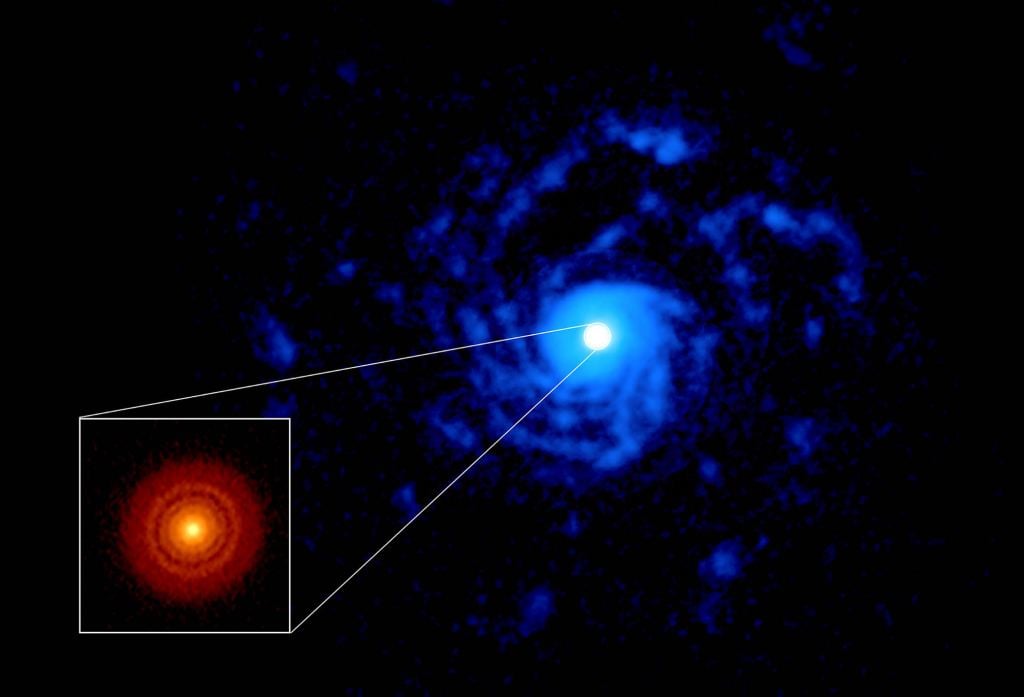Protoplanetary disks - where young stars are forming their families of planets - usually form concentric rings of gaps. But astronomers have recently spotted a surprising situation: an adolescent star surrounded by galaxy-like spiral arms.
As stars just begin to warm up, they surround themselves with layers upon swaddling layers of dust and gas. Very quickly, this material settles into a thin disk (called a "protoplanetary disk") around the star and begins to form planets. Initially the planets are small and inconsequential, but as they grow that begin to carve out channels in the gas.
To us, over here on Earth, we can't see the planets themselves. But we can see the gaps they create in the protoplanetary disk, and we often observe neat, orderly concentric rings. It's really a pretty sight, watching all those baby planets starting to form.
But these observations are based on infrared emission from the dust, which is only one component of the material surrounding the still-forming star.
Recently, astronomers used the Atacama Large Millimeter/Submillimeter Array (ALMA) in northern Chile to instead map the gas surrounding RU Lupi, a young variable star about 400 light-years away. The observations revealed that surrounding the innermost disk is a vast cloud of gas, stretching over 100 times the distance between the Earth and the sun.
And that gas is weird. It's not just a normal cloud or disk, but a spiral. Giant spiral arms wrap around the star, cuddling the inner young star closely.
Astronomers aren't exactly sure what's causing the spiral arms. It could be that it's still in the process of collapsing. Or nearby material could be disrupting the gas, triggering the formation of spiral density waves.
Whatever the case, the new observations show that we aren't even coming close to understanding how new stars - and new planets - form.
 Universe Today
Universe Today

